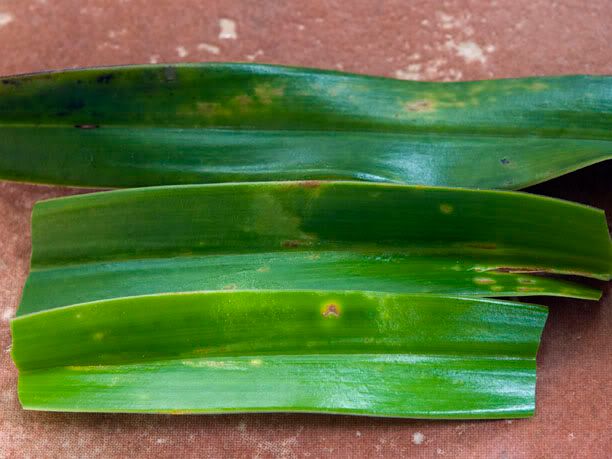O
Orchidzrule
Guest
Hi all,
Here is a phrag I've had for some time. It's Phrag Mem. Estelle Getty. I got it from Orchids Limited when they attended my OS show about 3 or 4 years ago. I can't say if I actually bought it or if Jason was kind enough to give it to me for helping out, but it became my first ever phrag. Knowing absolutely nothing about them, I gave it way too much light (and perhaps too much warmth) and the leaves got really pale and some odd markings appeared on them. To make matters worse, I almost certainly under-watered it. It had a single growth when I got it and another growth initiated around about the time I realized I should move it to a less stressful location. I did so and the new growth improved in appearance and grew fairly well, but the old one was too far gone and, as you can see in this photo, died off.
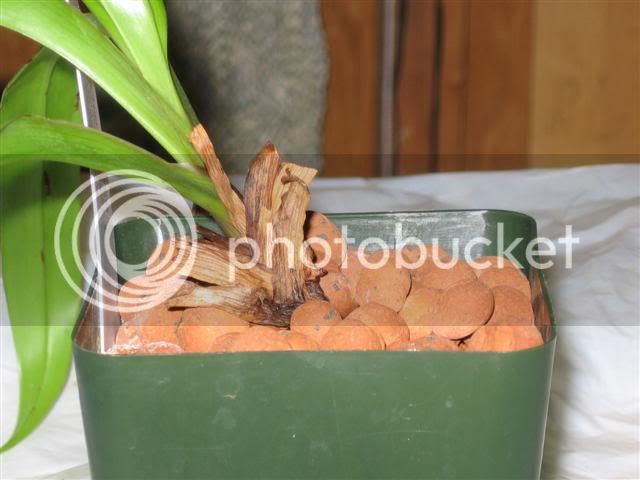
Although the new growth never looked as bad as the old one, it too had a hint of the same odd markings on the leaves, as you can see in the second and third photos. (My apologies for the fuzziness of the third photo--it's highly magnified and I couldn't tell the focus was a little off until I saw it on the computer screen.)
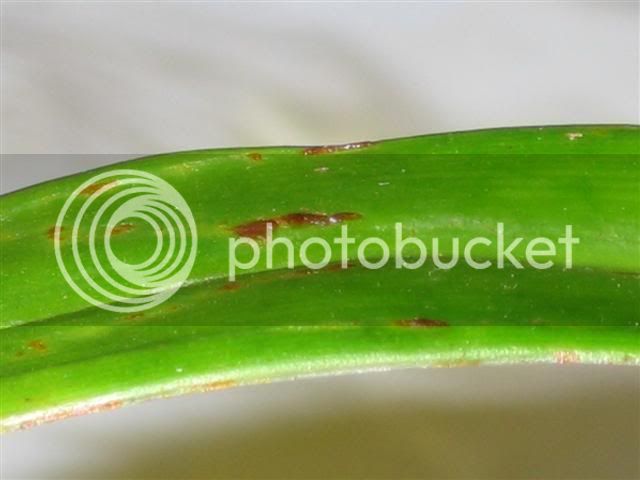

Although I've been told viruses are rare in phrags, I can't help but wonder if that's exactly what these markings indicate. If you can't tell from the photos, the brown areas are raised. The yellowy lines are a bit exaggerated in the third photo, compared with how they appear in real life.
So, if it's a virus, I really ought to throw the plant out of course, but I'm curious as to whether there is a possibility these markings are simply an artifact of the harsh conditions it was formerly growing in.
I might have thrown it out, anyway, virus or not, but imagine my surprise when I looked at it today! (Sunday, November 27) You may notice the leaf on the upper left is the same as the one in the two previous photos.
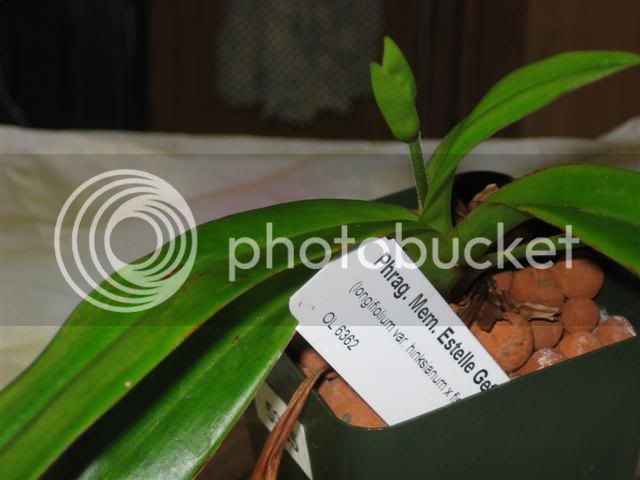
It's fairly tough to bring myself to throw out a plant in spike!
So, what are your opinions? Virus? Environmental? Should I throw the plant out? Keep it in the hopes the next growth will be better? (The leaves on the second growth, which had initiated under the former growing conditions, are much better than the ones on the first were, so I am kind of hoping.) Let it bloom, and then throw it out?
For those who like the full plant photo, here is one more photo. It doesn't look that terrible, but...
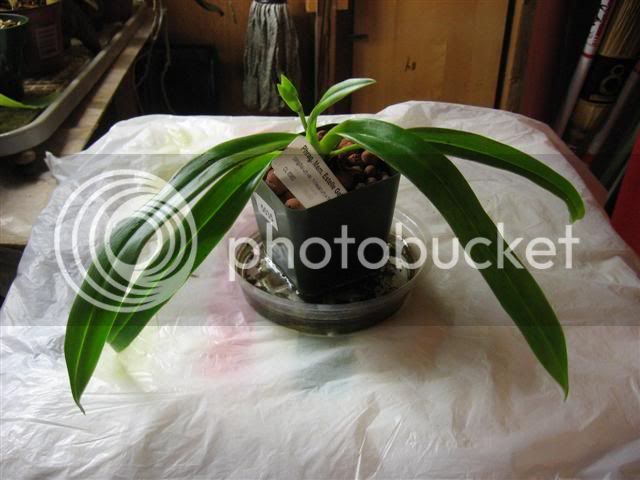
Any opinions would be most welcome!
Here is a phrag I've had for some time. It's Phrag Mem. Estelle Getty. I got it from Orchids Limited when they attended my OS show about 3 or 4 years ago. I can't say if I actually bought it or if Jason was kind enough to give it to me for helping out, but it became my first ever phrag. Knowing absolutely nothing about them, I gave it way too much light (and perhaps too much warmth) and the leaves got really pale and some odd markings appeared on them. To make matters worse, I almost certainly under-watered it. It had a single growth when I got it and another growth initiated around about the time I realized I should move it to a less stressful location. I did so and the new growth improved in appearance and grew fairly well, but the old one was too far gone and, as you can see in this photo, died off.

Although the new growth never looked as bad as the old one, it too had a hint of the same odd markings on the leaves, as you can see in the second and third photos. (My apologies for the fuzziness of the third photo--it's highly magnified and I couldn't tell the focus was a little off until I saw it on the computer screen.)


Although I've been told viruses are rare in phrags, I can't help but wonder if that's exactly what these markings indicate. If you can't tell from the photos, the brown areas are raised. The yellowy lines are a bit exaggerated in the third photo, compared with how they appear in real life.
So, if it's a virus, I really ought to throw the plant out of course, but I'm curious as to whether there is a possibility these markings are simply an artifact of the harsh conditions it was formerly growing in.
I might have thrown it out, anyway, virus or not, but imagine my surprise when I looked at it today! (Sunday, November 27) You may notice the leaf on the upper left is the same as the one in the two previous photos.

It's fairly tough to bring myself to throw out a plant in spike!
So, what are your opinions? Virus? Environmental? Should I throw the plant out? Keep it in the hopes the next growth will be better? (The leaves on the second growth, which had initiated under the former growing conditions, are much better than the ones on the first were, so I am kind of hoping.) Let it bloom, and then throw it out?
For those who like the full plant photo, here is one more photo. It doesn't look that terrible, but...

Any opinions would be most welcome!
Last edited by a moderator:




